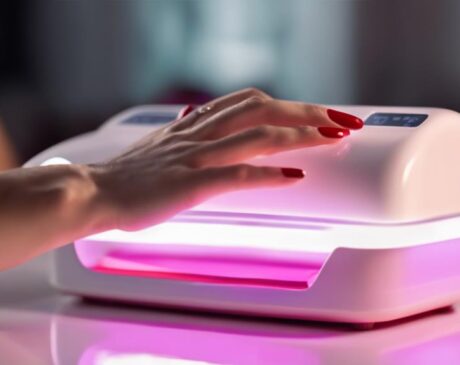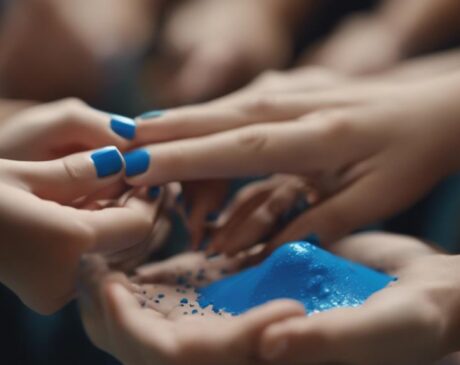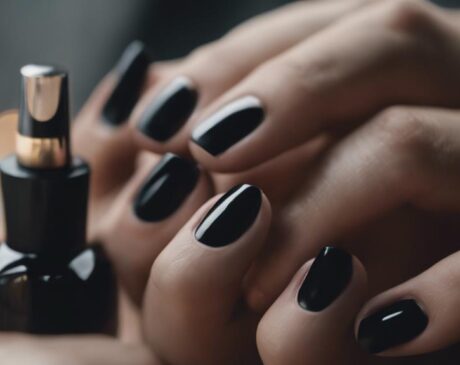Why Wont My Fake Nails Stick?
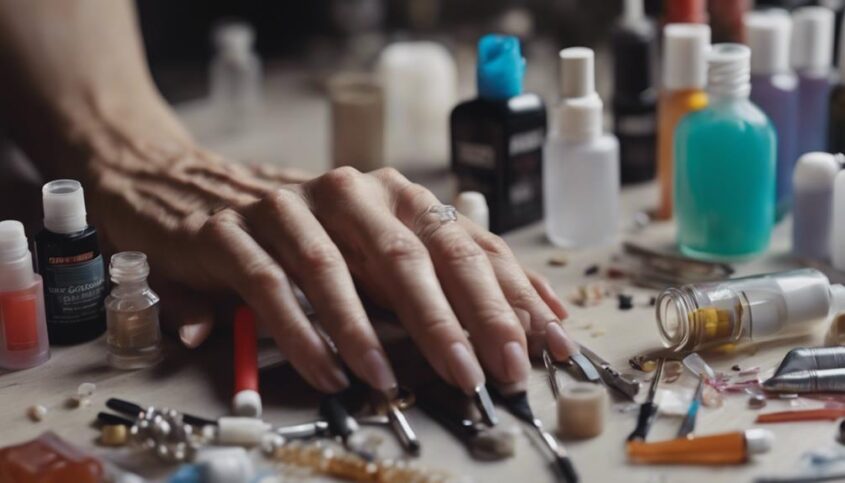
To ensure fake nails stick, clean nails thoroughly, trim to shape, and dehydrate. Choose correct size nails, apply glue evenly, and avoid excessive glue. Use fresh adhesive and match fake nails to natural nail shape and texture. Manage moisture and oil with dehydrator and oil-free primer. Be mindful of temperature and chemical exposure. If you want to address why your fake nails won't stick, consider these tips.
Key Takeaways
- Improper nail preparation affects adhesion.
- Low-quality adhesive or expired glue can cause lifting.
- Incorrect fake nail selection impacts stickiness.
- Excessive moisture or oil weakens the bond.
- Harsh chemicals can deteriorate adhesive quality.
Nail Preparation
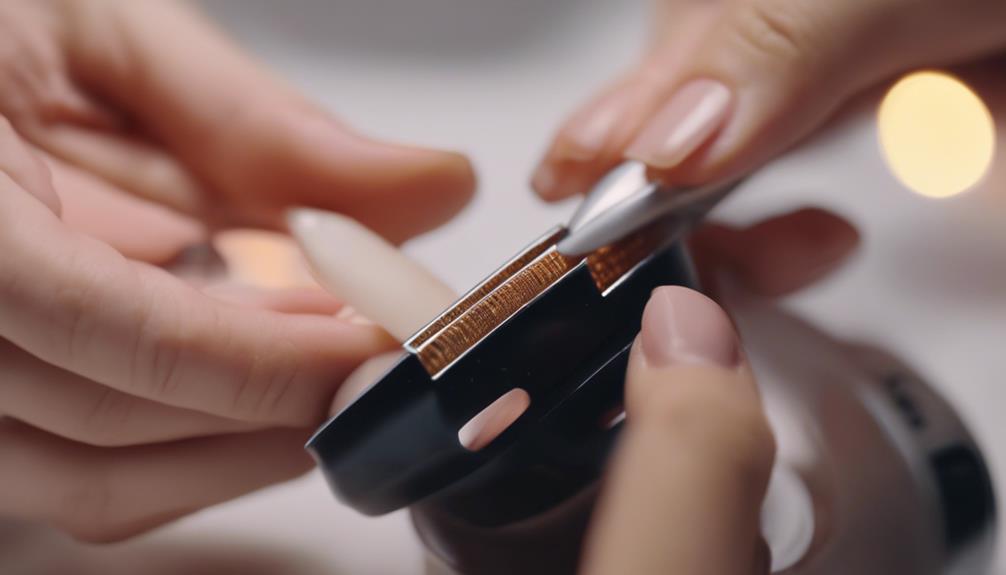
Properly preparing your nails is essential for ensuring that fake nails adhere successfully. Before applying fake nails, start by removing any existing nail polish and cleaning your nails thoroughly. Trim and shape your nails to your desired length and style, ensuring they are free of any rough edges or uneven surfaces. Next, gently push back your cuticles to create a clean and smooth surface for the fake nails to adhere to. To further enhance adhesion, lightly buff the surface of your nails to remove any natural oils and debris, promoting a stronger bond with the fake nails.
Innovative nail preparation techniques include using a dehydrator or primer specifically designed for fake nails to ensure maximum adherence. These products help to remove excess oils and moisture from the nail bed, creating an optimal surface for the fake nails to bond to. Additionally, incorporating nail strengthening treatments into your nail care routine can improve the overall health and strength of your natural nails, providing a solid foundation for fake nails to adhere to. By following these innovative nail preparation steps, you can increase the longevity and durability of your fake nails.
Incorrect Application Technique
When applying fake nails, ensuring the correct technique is crucial for successful adhesion and longevity. To achieve the best results, consider the following innovative tips:
- Proper Size Selection: Start by choosing fake nails that fit your natural nail shape and size. Incorrect sizing can lead to lifting and early detachment.
- Thorough Nail Cleaning: Before application, make sure to thoroughly clean your natural nails to remove any oils or residue. This step is essential for promoting strong adhesion.
- Gentle Buffing: Lightly buff the surface of your nails to create a slightly rough texture. This helps the fake nails adhere better to your natural nails.
- Avoiding Excess Glue: Apply a thin, even layer of glue to the fake nail before pressing it onto your natural nail. Excess glue can cause the nails to lift or create a bulky appearance.
Quality of Adhesive
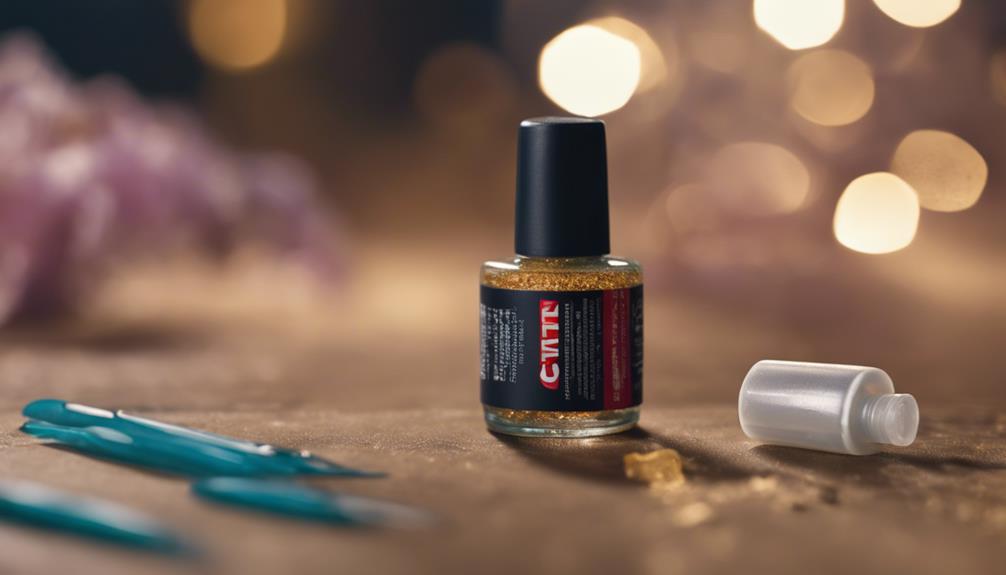
When it comes to the quality of adhesive for fake nails, two key points need to be considered: the adhesive's shelf life and the proper application technique. Adhesive that has expired or degraded may not adhere well, leading to nails that won't stick. Additionally, the way the adhesive is applied plays a crucial role in ensuring a secure and long-lasting bond between the fake nail and the natural nail.
Adhesive Shelf Life
The longevity and effectiveness of fake nails' adhesion greatly depend on the quality and freshness of the adhesive used. Proper care and attention to the adhesive's shelf life can make a significant difference in how well your fake nails stay in place. Here are some key points to consider:
- Expiration Date: Check the expiration date on the adhesive packaging to ensure it is within its usable period.
- Storage Conditions: Store the adhesive in a cool, dry place away from direct sunlight to maintain its effectiveness.
- Seal Integrity: Ensure the adhesive container is tightly sealed when not in use to prevent it from drying out.
- Replace Regularly: It is recommended to replace adhesive regularly, even if it appears unused, to ensure optimal adhesion results.
Proper Application Technique
To ensure optimal adhesion and longevity of fake nails, mastering the proper application technique with high-quality adhesive is essential. When applying fake nails, start by preparing your natural nails – ensure they are clean, dry, and free of any oils. Next, select the correct size of fake nails for each nail bed and gently buff the surface to create a slight roughness for better adhesion. Apply a small amount of high-quality adhesive, focusing on the center of the fake nail, and press down firmly for a few seconds. Avoid using too much glue to prevent excess spillage, which can weaken the bond. Finally, seal the edges by applying a thin layer of adhesive to enhance durability and prevent lifting.
Nail Type Compatibility
Ensuring compatibility between your natural nail type and the fake nails you choose is crucial for a long-lasting, flawless application. Different nail types require specific fake nails to ensure a secure and durable bond. Here are four key points to consider when selecting fake nails based on your natural nail type:
- Nail Shape: Match the shape of the fake nails to your natural nail shape for a seamless fit that reduces the risk of lifting or breakage.
- Nail Size: Choose fake nails that closely match the size of your natural nails to ensure proper adhesion and prevent discomfort.
- Nail Texture: Consider the texture of your natural nails – smooth or ridged – when selecting fake nails to promote better adherence and a more natural look.
- Nail Flexibility: Opt for fake nails with a similar flexibility to your natural nails to prevent cracking or popping off due to differences in movement and pressure.
Moisture and Oil on Nails
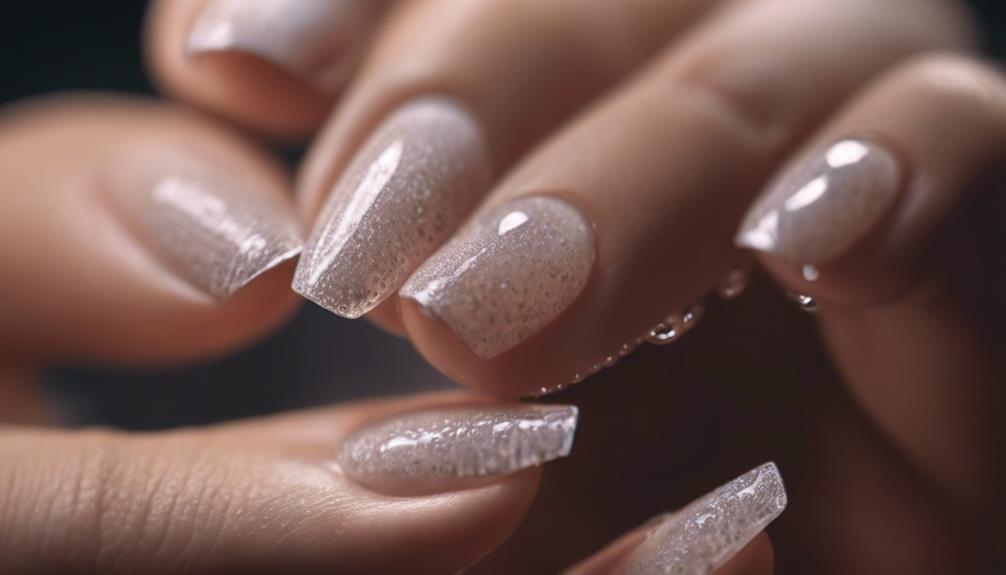
When it comes to adhering fake nails, moisture and oil on natural nails can be significant barriers. The presence of oils can hinder the adhesion of the fake nails, making it essential to ensure the nails are thoroughly dry before application. Understanding how moisture and oils affect the fake nail application process is crucial for achieving a long-lasting and flawless result.
Oil Hinders Adhesion
Excessive moisture and oil on the nails can significantly hinder the adhesion of fake nails. When dealing with oily nails, it is crucial to take proactive steps to ensure a strong bond between the natural nail and the artificial extension. Here are four innovative strategies to combat the challenges posed by oily nails:
- Prep with a dehydrator: Use a specialized nail dehydrator to remove excess oils and moisture from the nail plate.
- Oil-free nail primer: Opt for a nail primer that is specifically formulated to adhere to oily nail surfaces.
- Avoid oily products: Steer clear of lotions, cuticle oils, and oily hand creams prior to nail application.
- Regular cleansing: Maintain clean nails by regularly washing with soap and water to prevent oil buildup.
Dry Nails Are Essential
Maintaining dry nails is crucial for ensuring optimal adhesion of fake nails and preventing any issues related to excessive moisture and oil on the nail surface. Properly dried nails provide a clean canvas for the adhesive to bond effectively, extending the longevity of the fake nails. Moisture and oil on the nail bed can create a barrier, hindering the bonding process and leading to premature lifting or detachment of the fake nails. To enhance adhesion, consider using a nail dehydrator or cleanser to eliminate any traces of moisture or oil before applying fake nails. By prioritizing dry nails, you set the foundation for a flawless and long-lasting fake nail application, ensuring a sleek and professional look that withstands daily activities.
Environmental Factors
What impact do environmental factors have on the adherence of fake nails? Environmental factors play a crucial role in determining how well fake nails adhere to natural nails. Innovations in the beauty industry have allowed for advancements in fake nail adhesion, but certain environmental conditions can still affect their longevity. Here are four key environmental factors to consider:
- Humidity Levels: High humidity can soften the adhesive, causing fake nails to lift or peel off prematurely. On the other hand, low humidity can make the adhesive brittle and prone to cracking.
- Temperature: Extreme temperatures, whether hot or cold, can impact the effectiveness of the adhesive. It is essential to apply fake nails in a moderate temperature environment to ensure optimal adhesion.
- Exposure to Water: Prolonged exposure to water, such as frequent hand washing or swimming, can weaken the adhesive bond, leading to fake nails detaching sooner.
- Chemical Exposure: Contact with harsh chemicals present in cleaning products or beauty treatments can deteriorate the adhesive, compromising the longevity of fake nails.
Frequently Asked Questions
How Long Does It Take for Fake Nails to Fully Adhere to the Natural Nail?
The process of fake nails adhering to the natural nail varies but typically takes about 24 to 48 hours for full adhesion. Factors like nail preparation, glue quality, and application technique influence the bonding time.
Can Fake Nails Be Repositioned or Adjusted After They Have Been Applied?
Innovative technology in fake nails allows for easy repositioning and adjustments post-application. This feature offers users flexibility and creativity in their nail designs. Stay ahead of the curve with customizable and hassle-free fake nails.
Are There Any Specific Products or Techniques That Can Help Improve the Longevity of Fake Nails?
To enhance the durability of fake nails, consider using a quality nail primer to improve adhesion. Additionally, opt for a strong nail glue with proper application techniques. Regular maintenance and avoiding exposure to excessive moisture can also contribute to prolonged wear.
What Should I Do if My Fake Nails Start Lifting or Peeling off Prematurely?
When fake nails start lifting or peeling prematurely, it's important to address the issue promptly. Properly clean and prep the nail bed, ensure a good fit, use quality adhesive, and consider professional application for longer-lasting results.
Are There Any Health Risks Associated With Wearing Fake Nails for an Extended Period of Time?
Extended wear of fake nails may pose health risks, such as fungal infections, weakened natural nails, or allergic reactions to the materials used. Regular breaks, proper removal, and maintenance can help mitigate these potential concerns.

